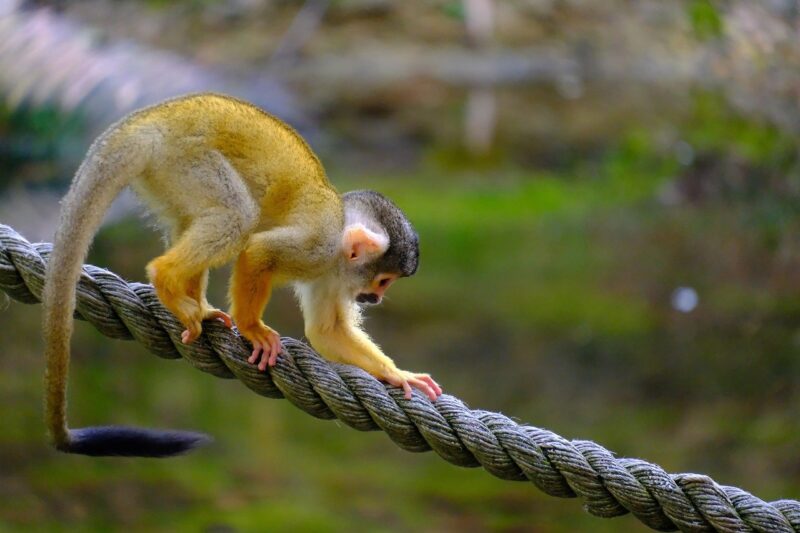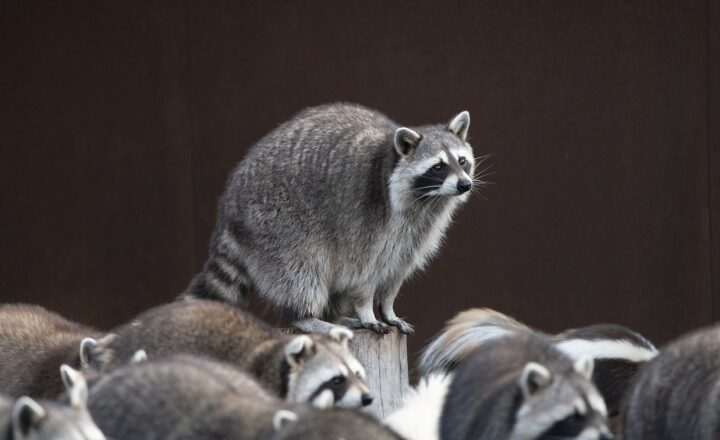
The world of primates is a fascinating domain filled with complexities that reflect the evolutionary journey of these remarkable creatures. From the earliest ancestors of monkeys millions of years ago to the vibrant species we recognize today, the evolutionary tale tells us not just about physical adaptations but also about the survival strategies that shaped their existence. This article will guide you through the evolutionary timeline from early primates to modern monkeys, exploring key adaptations, habitat changes, and behavioral evolutions that have defined their lineage.
1. Understanding the Primates: An Overview
Primates are a diverse order of mammals that include monkeys, apes, and humans. They are known for their significant brain development, complex behaviors, and social structures. Primates generally fall into two main categories: Prosimians, which include lemurs and lorises, and Anthropoids, which include monkeys and apes. Understanding the evolutionary background of these groups is vital in grasping the overall developmental path of modern monkeys.
Primates share several characteristics that contribute to their adaptability:
- Highly developed brains: These facilitate complex behaviors and social interactions.
- Grasping hands and feet: This adaptation aids in climbing and manipulation of objects.
- Eyes positioned forward: This allows for depth perception, crucial for navigating through trees.
The primate lineage dates back to the late Cretaceous period, approximately 70 million years ago, when the first members of this order began to appear. However, it’s their evolutionary journey from early primates that ultimately leads to the modern monkeys we see today.
2. The Early Primates: The First Steps in Evolution
Around 60 million years ago, early primates known as Plesiadapiforms emerged. These creatures had unique adaptations that set them on a separate evolutionary path from other mammals:
- Physical Characteristics: Plesiadapiforms exhibited rodent-like features such as elongated limbs and claws, which were advantageous for foraging in trees.
- Dietary Adaptations: They primarily consumed fruits and insects, which allowed them to exploit diverse environments in the forests of North America and Europe.
- Social Structures: Evidence suggests these early primates formed small, social groups, offering protection against predators and enhancing offspring survival rates.
These initial adaptations laid the groundwork for the much more complex features of modern primates, paving the way for the development of true primates in the Eocene epoch, around 55 million years ago.
3. The Rise of True Primates
As the climate of the Earth warmed and forests expanded, true primates began to evolve into two major lines: the prosimians and the anthropoids. This marked a significant evolutionary turning point:
- Prosimians: This group includes lemurs and tarsiers, which retained many primitive features but developed enhanced adaptations for arboreal life, such as heightened vision and nocturnal behavior.
- Anthropoids: This group includes monkeys, apes, and humans. Over time, they developed larger brains, expanded social interactions, and increasingly complex behaviors, leading to the evolution of New World and Old World monkeys.
4. The Branching Out: Evolution of Modern Monkeys
The divergence of monkeys into New World and Old World types occurred roughly 35 million years ago. This separation was influenced by geographical barriers and environmental changes which dictated their distinct evolutionary paths:
- New World Monkeys (Platyrrhines): Found primarily in Central and South America, these monkeys feature flat noses and prehensile tails, enabling them to grasp branches. Examples include tamarins, capuchins, and howler monkeys.
- Old World Monkeys (Catarrhines): With a range that includes Africa and Asia, these monkeys have narrow noses and non-prehensile tails. They include baboons, macaques, and mandrills. Old World monkeys are closely related to apes, sharing many similar traits such as social structures and behaviors.
The evolutionary journey of these distinct branches resulted in diverse adaptations that enabled both New and Old World monkeys to thrive in their specific environments.
5. Adaptations for Survival: Features of Modern Monkeys
Modern monkeys display a variety of adaptations that speak to their evolutionary success:
- Social Structures: Many species of monkeys live in complex social groups, which enhance survival through cooperative foraging and protection from predators.
- Communication Techniques: Monkeys employ a wide range of vocalizations, body language, and facial expressions to communicate, establishing social hierarchies within their groups.
- Adaptable Diets: Most modern monkeys are omnivorous, allowing them to exploit various food sources in their environments, including fruits, leaves, and insects.
Their ability to adapt to diverse habitats—from tropical rainforests to savannahs—has contributed to the successful proliferation of monkey species worldwide.
6. Challenges and Conservation: The Present and Future of Monkeys
Despite their evolutionary success, modern monkeys face significant challenges from habitat loss, hunting, and climate change. Conservation efforts play a crucial role in ensuring their survival:
- Habitat Preservation: Protecting natural habitats through national parks and wildlife reserves is critical for sustaining monkey populations.
- Legal Protections: Enforcing laws against poaching and the pet trade can safeguard many endangered species from extinction.
- Ecotourism: Promoting responsible tourism can provide economic incentives for local communities while fostering conservation efforts.
The challenges confronting modern monkeys illustrate the importance of understanding their evolutionary journey and recognizing our role in ensuring their continued existence.
Conclusion: The Legacy of Monkeys in Evolutionary History
The evolutionary journey from early primates to modern monkeys is a remarkable narrative that highlights adaptation, survival, and biodiversity. By exploring this history, we gain insights into not only the primate world but also our own evolutionary background. Recognizing the challenges faced by modern monkeys is essential in our efforts to protect and conserve these fascinating creatures, ensuring that their story continues to unfold in the years to come.
Understanding the evolutionary journey of monkeys helps us appreciate the intricate web of life and the importance of biodiversity on our planet. As stewards of the environment, it is our responsibility to foster a future where modern monkeys can thrive alongside us.






